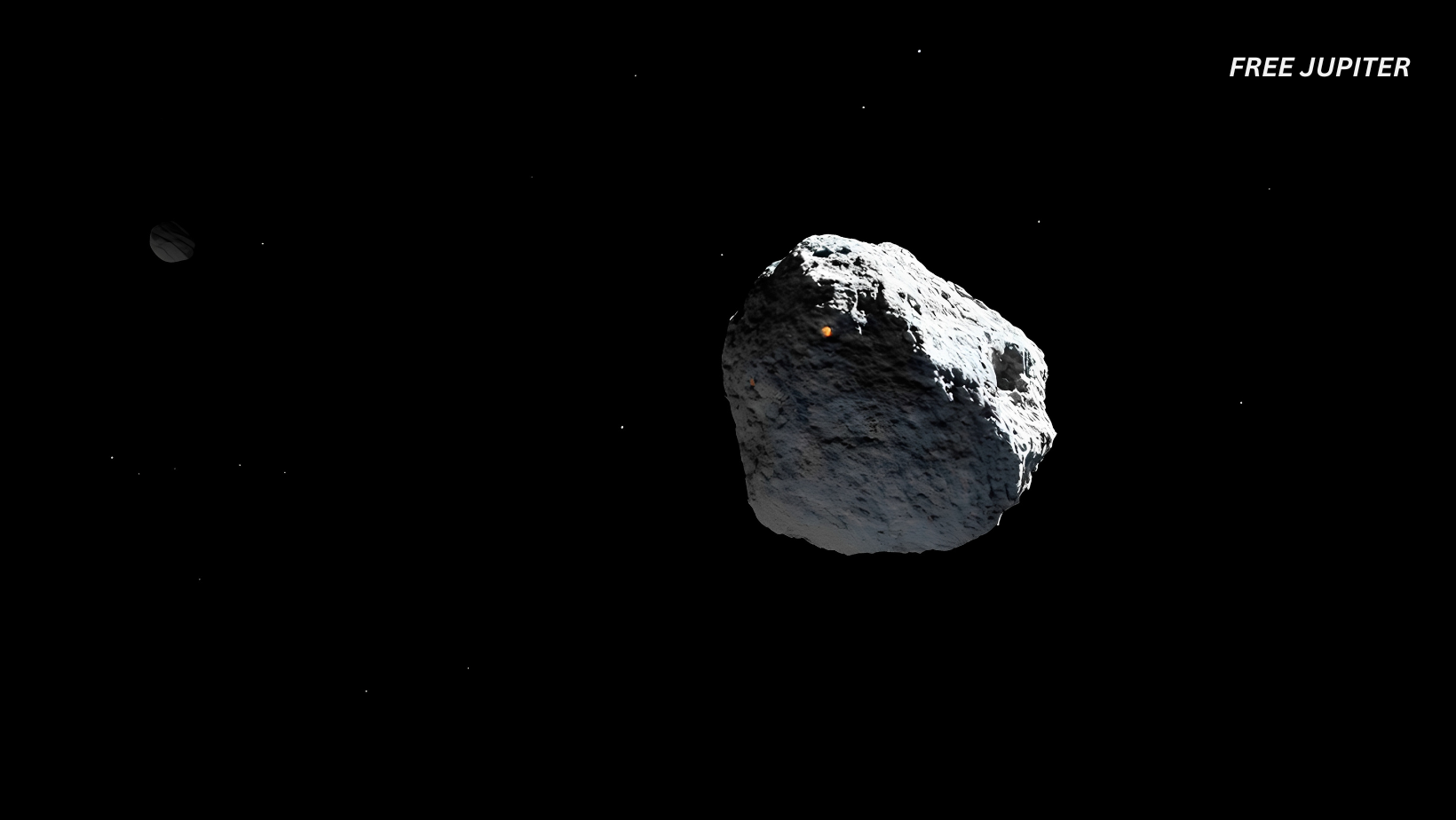A recently discovered asteroid, initially flagged for its potential to collide with Earth, has now become the focus of renewed attention due to an increased chance of impacting the Moon instead.
This celestial visitor, designated 2024 YR4, has captured the interest of astronomers and space enthusiasts alike, as its trajectory and risk assessments continue to evolve with new observations.
A Rocky Visitor with a Dramatic Entrance
Asteroid 2024 YR4 first entered the spotlight in early 2025, when calculations indicated a notable possibility of it striking Earth in December 2032. The initial estimated probability of collision was about 3.1 percent—a figure that, while not alarmingly high, was significant enough to warrant close monitoring.
The size of this asteroid is estimated to be between 53 and 67 meters (roughly 174 to 220 feet) in diameter. To put that in perspective, it is comparable to the asteroid responsible for the Tunguska event in 1908, which flattened a vast area of forest in Siberia.
Given this size, an impact on Earth could have devastating consequences, potentially leveling a city. Naturally, this led to heightened attention from planetary defense teams and astronomers worldwide.
Reassessing the Threat to Earth
Fortunately, further observations and refined calculations rapidly diminished the likelihood of a direct Earth impact by 2024 YR4. The updated risk dropped to a minuscule fraction of a percent, effectively ruling out a collision with our planet. This was a relief to many, but the asteroid’s story was far from over.
The Moon Enters the Picture
While Earth’s risk plummeted, the Moon’s chance of being struck by 2024 YR4 remained a concern. Initial estimates placed the probability of a lunar impact at around 3.8 percent. Although this is still a relatively low risk, it is substantially higher than the chance of Earth being hit.
Why does a potential lunar collision matter? Unlike Earth, the Moon lacks an atmosphere that could break up incoming objects. A direct hit by an asteroid of this size would create a large crater, offering a unique opportunity for scientists to observe impact processes in real time.
Such an event would not threaten the Moon’s orbit or stability, but it would be a spectacular natural experiment and an extraordinary sight for observers.
New Data from the James Webb Space Telescope
In May 2025, astronomers led by Andy Rivkin from the Johns Hopkins Applied Physics Laboratory utilized fresh data from the James Webb Space Telescope (JWST) to refine the asteroid’s trajectory. These new measurements have nudged the lunar collision probability up to 4.3 percent.
Though this increase is modest, it underscores the dynamic nature of tracking near-Earth objects and their paths. Each new observation can shift risk assessments, sometimes in unexpected ways.
The Challenge of Tracking Distant Asteroids
One of the difficulties in predicting asteroid impacts lies in the vast distances and the small size of these objects. Currently, 2024 YR4 is too far from Earth to be observed directly, which limits astronomers’ ability to refine its orbit further.
However, this asteroid approaches Earth’s vicinity roughly every four years, providing periodic chances to gather more data.
The next close approach is expected in December 2028, when astronomers will have another opportunity to study 2024 YR4 in detail. This will allow for more precise calculations of its path and impact probabilities, both for the Moon and Earth.
What Would a Lunar Impact Mean?
If 2024 YR4 were to collide with the Moon, it would create a significant crater, offering a rare chance to witness crater formation in real time. Scientists could study the impact’s effects on lunar geology and better understand the history of impacts that have shaped the Moon’s surface over billions of years.
Such an event would also provide insights into the behavior of similar-sized asteroids and their potential effects on Earth. Observing the impact could help improve models for predicting damage from future asteroid encounters.
Read more: Bizarre Metal From Outside Our World Spotted in Ancient Treasure Stash
Looking Ahead
While the odds of 2024 YR4 striking the Moon remain relatively low, the asteroid’s journey highlights the importance of continuous monitoring of near-Earth objects. Advances in telescope technology, such as the JWST, play a crucial role in refining our understanding and preparedness.
The coming years will be critical for tracking this intriguing asteroid. With the next observation window opening in late 2028, astronomers worldwide will be watching closely to update risk assessments and prepare for any potential outcomes.
Conclusion
Asteroid 2024 YR4 serves as a reminder of the dynamic and sometimes unpredictable nature of our cosmic neighborhood. From an initial concern about a possible Earth impact to the current focus on a lunar encounter, this space rock’s story is unfolding in real time.
While the chances of a collision remain relatively low, the scientific opportunities presented by a lunar impact are exciting and valuable.
As we continue to observe and learn, 2024 YR4 exemplifies the ongoing efforts to understand and mitigate risks from near-Earth objects, ensuring that humanity remains vigilant and prepared for whatever the universe may send our way.
The Role of Advanced Telescopes in Tracking Near-Earth Objects
The evolving story of asteroid 2024 YR4 underscores the vital role that cutting-edge telescopes play in planetary defense. Instruments like the James Webb Space Telescope have revolutionized our ability to observe distant and faint objects in space, providing critical data that sharpen our predictions of asteroid trajectories.
These powerful observatories enable astronomers to detect subtle changes in an asteroid’s path, size, and composition, which can significantly affect impact risk assessments.
As demonstrated by the recent updates to 2024 YR4’s lunar collision probability, every new observation can refine our understanding and improve preparedness.
Read more: What Happened When Physicists Successfully Simulated a Black Hole in The Lab
Moreover, the periodic nature of asteroid close approaches means that continuous monitoring is essential. Upcoming observation windows, such as the one expected in late 2028 for 2024 YR4, offer crucial opportunities to gather fresh data and update risk models.
In the broader context, these advancements contribute to global efforts to develop early warning systems and potential mitigation strategies, ensuring that humanity can respond effectively to any future threats from space. The synergy between technology, science, and international collaboration is key to safeguarding our planet and its celestial neighbors.










